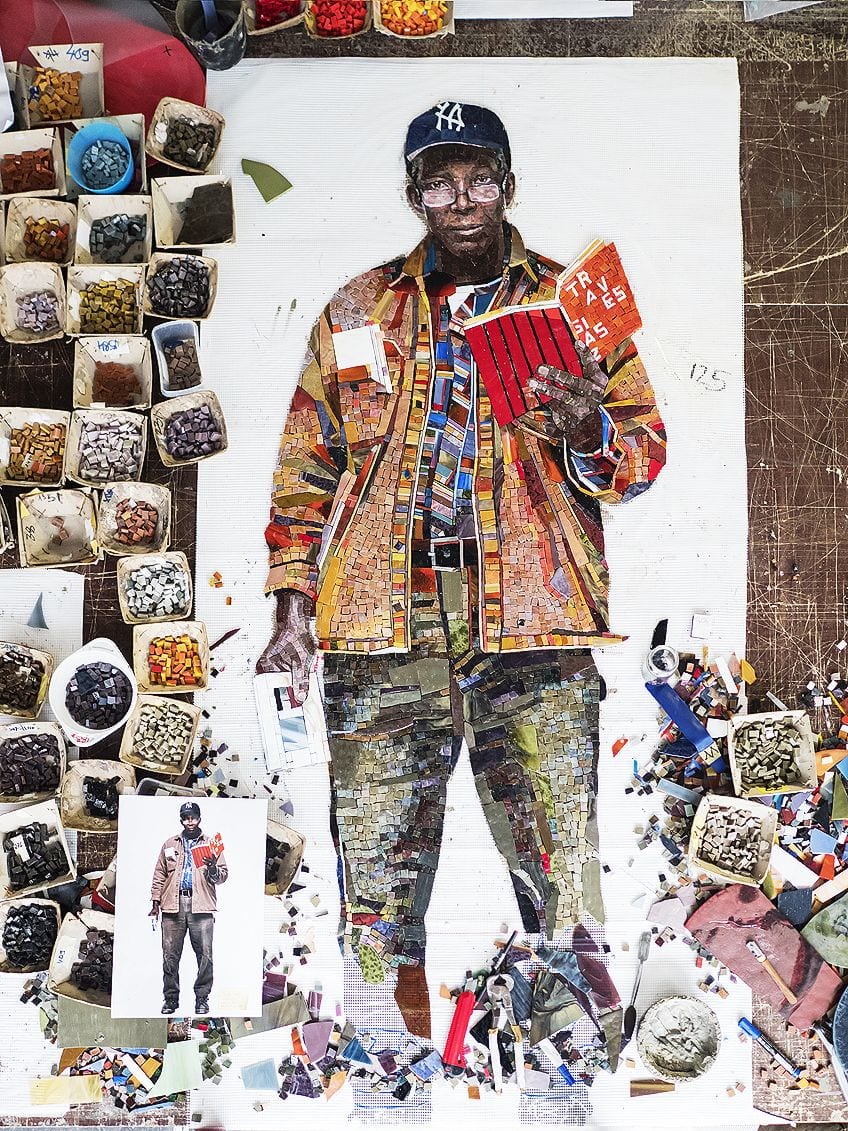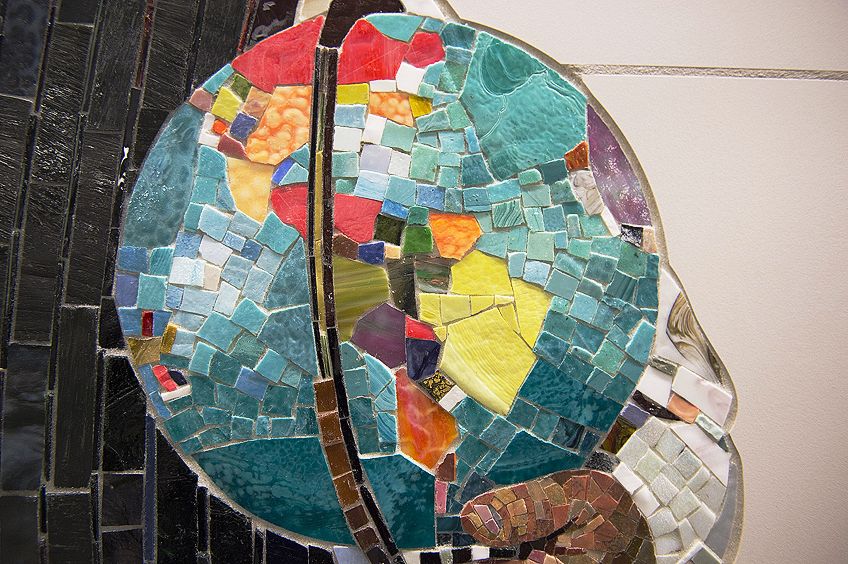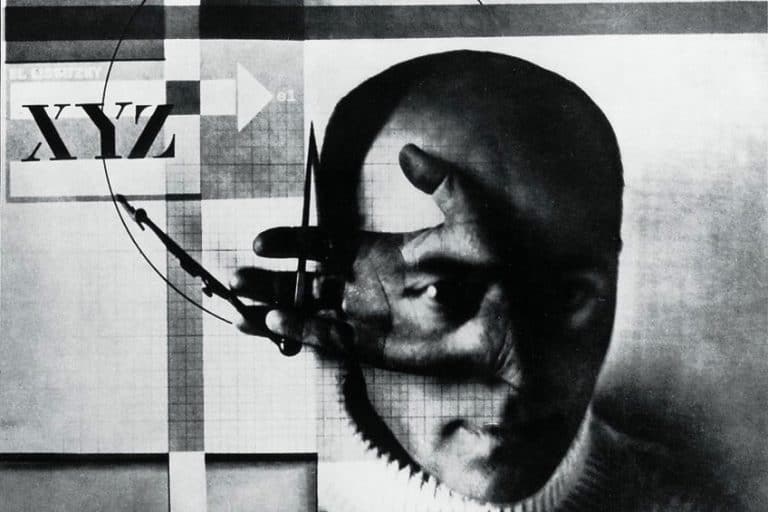Recycled Art – Exploring Impressive Art Made From Recycled Materials
Recycled art can loosely be described as art that uses materials that are usually discarded, as the primary medium. It embodies a vision of art as part of a circular economy, making functional and aesthetic use of what we would, in other contexts, define as waste. There is no rule as to what types of materials can be used, provided it fits the criterion of being “waste”, such as plastic, metal, paper, electronic waste, or any other found objects.
What Is Recycled Art?
On a superficial level, recycled art can be defined as creative productions that make use of waste or discarded objects. In the most basic sense of the word, it can refer to the rudimentary creations by children of things like toilet rolls and bottle caps to instill consciousness about how we dispose of items in our everyday life and to help children learn about the practice of upcycling everyday waste for functional or aesthetic purposes.
It can be argued that recycled art is more than an attempt to exercise creativity with used materials for the sake of saving money or taking the more convenient option of using whatever is at hand to act upon a moment of inspiration. This is indeed the case with most artists who create recycled art.
Irrespective of the particular theme or environmental issue that a sophisticated artwork might address (of which there can be many) and underlying the simple act of using materials for the second or third time, is a strong message that highlights the urgent need for increased awareness and behavioral change on an individual level in the way that we relate to the world we live in.

Because recycled materials are used to create art, this type of art brings to attention the looming threat of pollution as a result of the consumerist culture that defines modern-day living. In addition to the statement made by the use of waste as a defining feature of this type of art, creations can be constructed in such a way to raise awareness of particular problems that have arisen in various fields, such as climate change or diminishing biodiversity or deforestation.
Themes that are conveyed through this type of art vary considerably among artists who use discarded materials in their art but the common thread, because they all use materials that have been thrown away, is that they raise awareness regarding recycling and ultimately encourage and inspire others to reuse or recycle things that have been relegated to the trash.

There are no limits as to the type of material that can be used in this art, provided it is derived from unwanted items that have been disposed of. Some of the most common materials include electronics, paper, metal, and plastics.
The purpose? At the very least, trash on landfill sites can be said to be an unattractive eyesore. Recycled art seeks to transform the blight of pollution into works of art that speak to us on a human level and, in some cases, appeal to us on an emotional level and our ability to appreciate beauty.
In this way, this type of art highlights the urgency of making use of waste materials and transmuting them into something more than the sum of their parts. In essence, it makes viewers aware of the environmental impact of their actions.
Recycled Art and Found Art
The line between garbage art and “found art” can sometimes be blurred, where the latter term refers to artworks that are created by repurposing any item that is found or indeed sought after. It can be argued that the repurposing of everyday objects for artistic reasons started with Pablo Picasso who used everyday objects or pictures in collages.
If this argument were to be accepted, one might say that it informed the unexpected and dramatic statement that Marcel Duchamp made when he boldly challenged the meaning of art through his placement of an essentially untouched urinal in the context of art.

The statement made by Duchamp, however, was driven by the desire to redefine art. Embodied within art made from recycled materials are some deeper nuances relating specifically to the environment rather than the meaning of art.
In recent decades, experts in various fields, as well as the general public, have begun to recognize a growing need to address and change the behaviors that contribute toward various pressing environmental concerns that are the result of human activity.
The Deeper Dimensions of Recycled Art
As you can see, this modern form of art is largely defined by the underlying motive and philosophical standpoint, rather than any specific physical attributes such as the use of space and color that have been the defining features of art movements that have occurred in the past. There is no definitive size that art using used objects is limited to, and it encompasses both three-dimensional art and two-dimensional art.
Artists who create art using discarded materials and objects are often driven by the idea of the “Anthropocene”, a term that has been increasing in popularity that alludes to humanity as the determining factor in creating the conditions that pose a threat to life on earth. It identifies humans as the main cause behind a sixth mass extinction that can be likened to the devastating effects of massive geological events such as the ice age.
Regardless of the materials that are used to create art that belongs to the definition of garbage art, this type of art plays an important role in raising awareness about conservation, sustainability, and the far-reaching consequences of the choices we make both in art, and our everyday lives.

The line between recycled art and activism can easily be blurred with many artists embodying a collaborative process through their work that makes a significant impact in itself. Because of this, art that uses discarded materials as the primary medium is a powerful testimony to the power of art in creating meaningful change in the world, with special regard for the numerous environmental crises we face as a collective.
So, on the one hand, recycled art can be defined as the use of discarded objects in a creative process, often to create awareness around the economic use of waste. According to this definition, it can be as simple as children’s art that is promoted to encourage greater awareness of the potential of using objects that can be reused and perhaps the value of the circular economy.
Although this is a fair definition of the concept, recycled art can also be as elaborate as larger-than-life installations that grace the galleries alongside some of the finest artworks.
We will see in the next section of this article some of the added dimensions that take various forms with different artists. This deeper definition of recycled art is well articulated by Bojan Maric: “Recycled art is usually recognized as the use of garbage and found objects in the process of creating art. This process is categorized by the artists’ interaction with a material already potent in symbolic meaning, prompting the artists to embed a certain message of social critique. In its essence, recycled art is conceptual and political.”
Artists Who Use Recyclable Material
Recycled art can be made out of plastic, metal, tires, electronics, clothes, or any other miscellaneous piece of trash you can find. One of the central philosophies behind the art that can be classified in this way is that is if it exists, you can use it to create art. Ask any one of the many artists who transform electronic relics into electronic waste into profound statements through their works of art, or who upcycle paper into complex and beautiful collages.
Some of the more well-known names behind the creation of art using electronic waste include Steven Rodrig, Nick Gentry, Miguel Rivera, and Erika Iris Simmons. Artworks made from plastic vary in terms of complexity and aesthetics, but some of the more intricate works include those brought to life by Angela Hazeltine Pozzi and Gilles Cenazandotti.
Often with more of a steampunk effect, artists like Robosteel, the Barefooted Welder, and Terrence Willment bring out the stunning potential of metal, using anything from car parts to remnants of airplanes. They create larger-than-life, often eerily futuristic trash sculptures by welding metal parts together.
If you like the idea of found objects being used to produce collage, check out the exquisite portraits that are the signature style of artist Jane Perkins. Other artists that produce beautiful and unique collages made from two-dimensional or three-dimensional bits and pieces include Zac Freeman and Tom Deininger.
Taking some time to view the work of each of the artists mentioned here will reveal the broad range of art that used materials can offer. It also is testimony to the fact that discarded objects are ripe with the potential to be transmuted into art that can enrich our lives and the planet.
Noteworthy Artists and Their Work
The number of artists who transmute trash into skillfully crafted artworks that not only reflect years of experience but which are also imbued with a meaningful message is growing, are too many to mention here. Many artists walk their talk, as far as bringing their values and message to life through stunning creative works goes, to be listed in the context of this article.
The artists listed below can give you an idea of the kind of mind-blowing potential inherent in discarded materials when passion, dedication, and talent are combined. The work of these artists (among many others not mentioned here) is testimony to the worlds of possibility and promise that discarded objects have despite their rejected status in society.
It just goes to show that trash can indeed be turned into treasure in the right hands.
Tim Noble and Sue Webster
London-based artists Tim Noble and Sue Webster are two artists who have joined forces to create recycled sculpture art that takes found object art and trash art to the next level. What first appears as an unsightly heap of trash that is reminiscent of what might appear on the landscape of a landfill site, these piles of waste project realistic silhouettes onto the wall behind them when direct light is shone on them.
In this way, it exposes the culprit responsible for the mess – humans.
Examples of trash sculpture from these innovative artists include Dirty White Trash (With Gulls) (1998), Wasted Youth (2000), Wild Mood Swings (2008 – 2009), and The Individual (2012). These artworks contain discarded waste such as ladders, wood chips, empty takeout containers, and sometimes animals that the artists have found and preserved.
Dirty White Trash was collected with waste that the artists accumulated for six months, highlighting the importance of measuring the amount of rubbish you collect as one of the first steps toward reducing waste, and toward a greener future.
Vik Muniz
Brazilian artist Vik Muniz takes recycled art to the next level. The impact of this artist’s work is not only visible in the finished artwork, but in the ripple effect that he creates by involving communities in helping him to find the objects he needs to produce his work. Examples of his work include Sugar Children: Valicia Bathes in Summer Clothes (1996) and Pictures of Garbage: Mothers and Children (2008).
Although he has been active as an artist since 1990 and his portfolio is extensive, his main area of specialization is creating portraits with discarded objects such as magazines, wires, and puzzle pieces as well as various other items of trash.
Nick Gentry
Unlike the likes of Tim Noble, Sue Webster, and Vik Muniz, Nick Gentry is an example of an artist who uses a specific type of waste rather than an assortment of materials. This London-based artist uses a collaborative process with members of the public to explore the relationship between data relics (from the era in which he grew up) with humanness by painting realistic portraits onto electronic objects.
These objects include x-rays, floppy discs, cassettes, and LPs, which are just a handful of the artifacts of the mid-to-late 20th century that he makes use of. He also used pulverized electronic pieces to create human figures and portraits.
Some of Gentry’s most striking pieces include Protolife (2013), DBase (2013), Invader (2013), and Human Connection (2018). More recent examples include Temptations (2019), Protectors of the Amazon – WWF (2020), Entertainment (2021), and Labyrinth (2021).
Barefooted Welder
Based in Australia, the Barefooted welder uses found metals such as copper and aluminum to conjure up recycled sculpture art that is life-sized. Using scrap metal, he creates installations that ignite the imagination based on custom designs that are ordered by clients.
We have seen how the art discussed in this article is more than the one-dimensional use of second-hand materials. Many of the artists explored here include a deeper dimension in their work that goes above and beyond merely fusing pieces of discarded waste.
For Tim Noble and Sue Webster, it lies in revealing personal accountability. For Vik Muniz, the meaning of art itself transcends the boundaries of the individual and his work becomes a collaborative project that not only raises awareness about environmental crises but which directly impacts communities in an empowering way. As for Nick Gentry, the added dimension lies in the nostalgic artifacts used in his work.
Recycled Art Projects for Kids
Recycled art has, to a large extent, become the buzzword for children’s art these days. Whether incorporated into educational programs, as an extracurricular art class, or simply used at home as a way of entertaining the kids, discarded objects provide a wealth of opportunity for cheap, fun creative art.
Regardless of whether you are using straws or empty toilet rolls, with a few simple items of stationery, kids can exercise their creative muscles, enhance their fine motor skills, and simultaneously learn some fun ways that they can play their part in cleaning up the environment.
As far as possible projects are concerned, you can go where your imagination takes you, and the possibilities are endless. Recycled art projects may include toilet roll bird feeders that coat empty toilet rolls with birdseed and tin can or egg box creatures. Bottles or toilet rolls can become rockets and fish can be created by flattening different colored water bottles.
Artists who create art that utilizes the waste materials recognize the earth as beleaguered with pollution as a result of mindless consumerism, and use their art as a platform to raise awareness for various environmental issues we face today. Using any number of materials that are usually discarded as trash such as metal, found objects, and plastic, artists embrace the concept of upcycling to convert trash into treasure and in doing so create a ripple effect with their work.
Take a look at our recycling art webstory here!
Frequently Asked Questions
What Are Some Examples of Recycled Art?
Art made from recycled materials can include anything from the rudimentary creations using plastic bottle tops by kindergartners to the exquisite and skillful technical creations of artists such as Vik Muniz and Nick Gentry. This art can include any materials that have been discarded, as the sky is the limit when it comes to what this type of art can be made from. For plastic art, look at the work of Tim Noble and Sue Webster, and for metalwork, the likes of Terrence Willment.
What Are Some Advantages of Recycled Art?
The main advantage of this form of art lies in the potential impact that it has on the people observing it. Artists who create this type of work are often motivated by raising awareness of environmental issues through their art or creating a deeper understanding and appreciation of the natural world through their creations. At the very least, art that uses discarded materials would evoke an emotional response – ideally, it would elicit change in individual behavior. Additionally, being produced from discarded materials, artistic creations that make use of discarded objects have minimal impact on the environment when compared to other materials.
What Recyclable Materials Are Used in Creating Artworks?
Any material that has been discarded can be used to create recycled art. This includes metals, electronic items, plastics and paper (often used in collages) as well as cloth. Some artists employ a combination of different materials in their work, while others choose one particular material. Found object art includes any material that is accidentally or intentionally collected.
Why Do Artists Use Recycled Materials?
Most artists who use materials that have been discarded do so to make a statement about pressing environmental issues. Much of the purpose of such art is to show that materials that we ordinarily are quick to discard can be repurposed in innovative, functional, and even beautiful ways. Oftentimes, artists who upcycle previously used materials are also trying to send a message relating to particular environmental themes such as pollution or climate change.
What Are Some Artists That Use Recycled Materials?
In recent decades, there has been a growing number of artists who make use of recycled objects in their work. Examples of artists who use discarded materials include Vik Muniz, Guerra de la Paz, Wim Delvoye, and Robert Bradford. Other artists who produce art made from trash include the Barefooted Welder and Angela Hazeltine Pozzi.
What Is Junk Art for Kids?
The word junk art can be used interchangeably with what we know as recycled art, which is an art that uses objects and materials that are usually thrown away after being used. It follows that junk art for kids is creating the opportunity for children to make use of waste materials such as bottles, bottle caps, and/or magazines to create something. Not only does it cultivate environmental awareness, but it also provides kids the opportunity to express their creative side economically and use materials that are accessible.
In 2005, Charlene completed her Wellness Diplomas in Therapeutic Aromatherapy and Reflexology from the International School of Reflexology and Meridian Therapy. She worked for a company offering corporate wellness programs for a couple of years, before opening up her own therapy practice. It was in 2015 that a friend, who was a digital marketer, asked her to join her company as a content creator, and this is where she found her excitement for writing.
Since joining the content writing world, she has gained a lot of experience over the years writing on a diverse selection of topics, from beauty, health, wellness, travel, and more. Due to various circumstances, she had to close her therapy practice and is now a full-time freelance writer. Being a creative person, she could not pass up the opportunity to contribute to the Art in Context team, where is was in her element, writing about a variety of art and craft topics. Contributing articles for over three years now, her knowledge in this area has grown, and she has gotten to explore her creativity and improve her research and writing skills.
Charlene Lewis has been working for artincontext.org since the relaunch in 2020. She is an experienced writer and mainly focuses on the topics of color theory, painting and drawing.
Learn more about Charlene Lewis and the Art in Context Team.
Cite this Article
Charlene, Lewis, “Recycled Art – Exploring Impressive Art Made From Recycled Materials.” Art in Context. March 1, 2022. URL: https://artincontext.org/recycled-art/
Lewis, C. (2022, 1 March). Recycled Art – Exploring Impressive Art Made From Recycled Materials. Art in Context. https://artincontext.org/recycled-art/
Lewis, Charlene. “Recycled Art – Exploring Impressive Art Made From Recycled Materials.” Art in Context, March 1, 2022. https://artincontext.org/recycled-art/.









